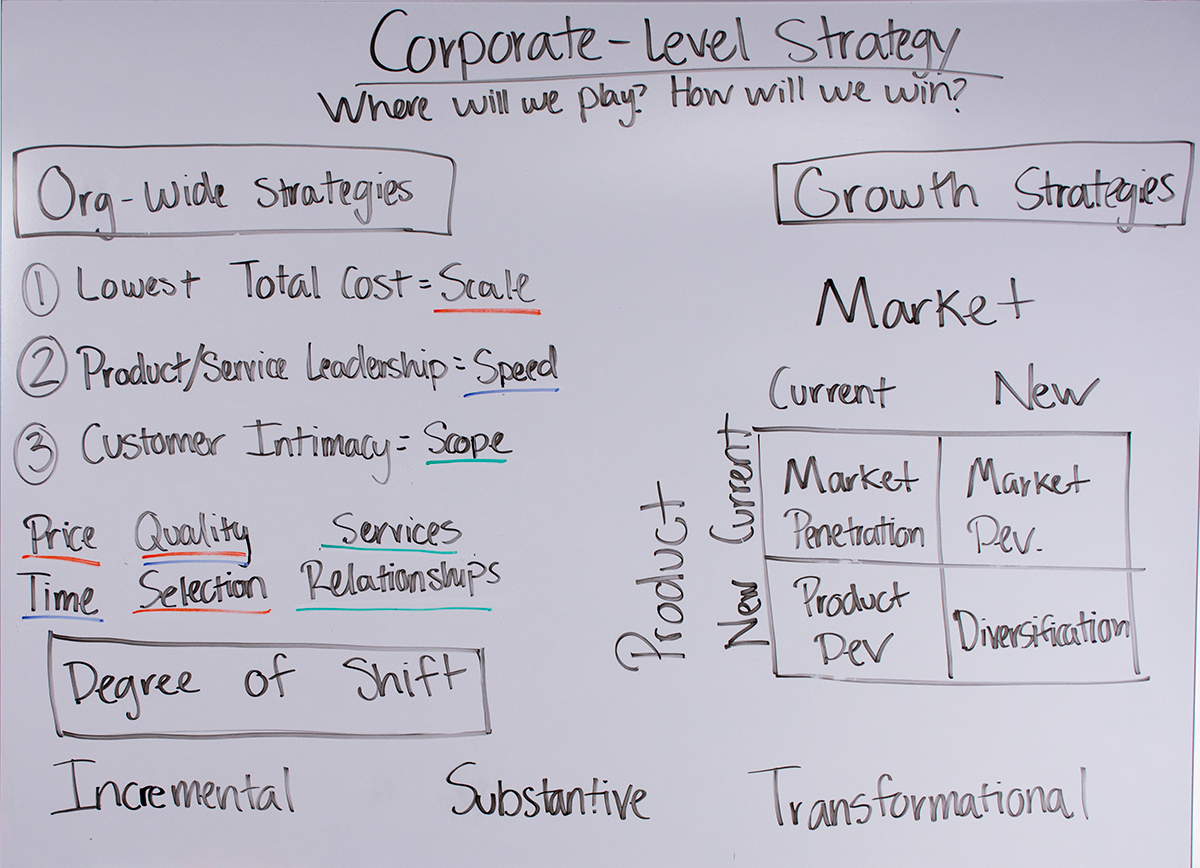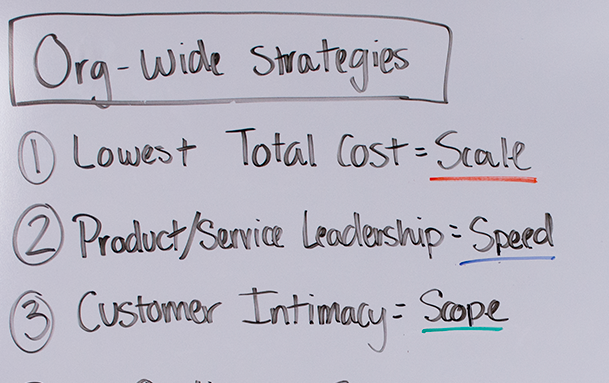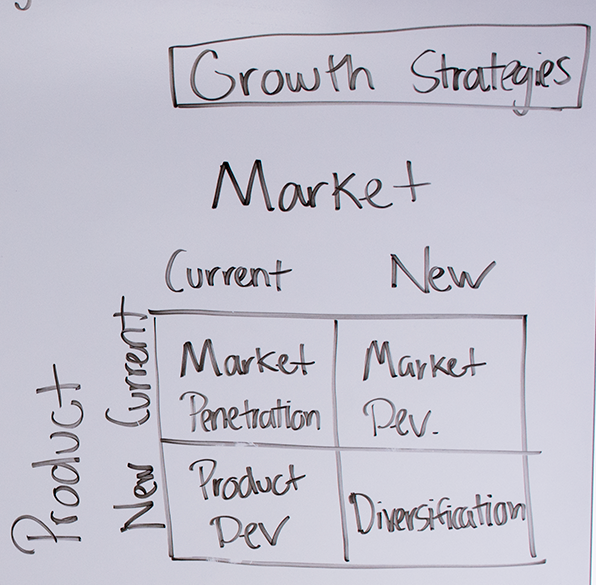In this whiteboard session, we’re defining corporate level strategies to answer, “Where we play and how will we win?”. See the different strategies you can develop and how to successfully implement them.
For more resources on building your strategic plan, view our Essentials Guide to Strategic Planning.
Video Transcript

Hi, my name is Erica Olsen. Today’s whiteboard session is about corporate level strategies.
Strategy is one of the most widely misused terms in strategic planning. So, I’d like to take this opportunity to clarify the confusion so you can use it effectively and build a truly strategic plan.
Get the Free Guide to Build Your Strategic Objectives (with Examples!)
We’re going to define the word “strategy” as a guiding approach and specific to this whiteboard session because we’re focused on corporate-level strategy, we’re answering the question, “Where we play and how will we win?”
We answer those questions in a couple of different ways. I’d like to think about them in sort of almost like three different levels.

The first level is the degree of shift, and this isn’t a traditional type of strategy but it is a guiding approach to a planning process that you need to clarify for your planning process.
Sometimes the degree of shift that you’re intending with your process and intending with your plan is incremental and what I mean by that is most planning processes are intended to move an organization from where it is today to somewhere in the future. And that future state may be somewhat similar to where we are today or it may be totally different. It may be transformational and it may be somewhere in between.
What’s important for you is to be clear about what’s the degree of shift that your plan is intending and you’re intending to move with your organization? Is it incremental? A little adjustment. Is it substantive? A little bit more. Is it transformational? A lot more.
So that’s level one.

Level two are your organization-wide strategies. Organization-wide strategies are overarching, which is why we call them that. They’re also called generic strategies, taking a page off of Michael Porter’s book, specifically “The Guru of Strategy,” and this type of strategy answers the question, “How will we win?”
There are three ways you can answer that question and what’s important is you need lead and compete on one of these three and you need to be good at the others.
The first one is lowest total cost. If you’re leading with this, you’re competing on scale. Think Southwest. And if you’re competing on scale, you need to be differentiated and really good at price, meaning delivering the total lowest price or lowest value. You need to have good quality but it doesn’t have to be five star. You need an okay selection but not a broad selection. Again, to compete on scale.
The second strategy that you could compete on and win in is product service leadership, and if you’re leading with that, you’re competing on speed. When we mean speed, we mean first to market. To be differentiated and to win with this strategy, you’ve got to be good at getting to market first and you’ve got to be good at building a solid, innovative product.
The third strategy is executing a customer intimacy strategy and winning on scope. By scope we mean a specific target market with a specific set of needs that you’re serving through products and services. Think Edward Jones. To be differentiated and win with this strategy, you need to be great at delivering amazing customer service and client service while developing and sustaining amazing relationships. So, again, like I said, you need to pick one and be good at the other two.

The next level is our growth strategies and that answers the question, “Where we play?” There are four of them and here is a nice two by two matrix just to give us some context.
On the top is our markets, current markets we’re in and new markets we might enter. Our products and services, current that we must sell and new that we might develop. So if you have more potential in your current markets with your current products, you can grow through a market penetration strategy.
If there are new markets that you can enter with your current products, that’s a market development strategy.
If there are new products, and think new-new, that you can develop and sell into your current markets, that’s a product development strategy. And new markets and new products is a diversification strategy.
Certainly, market penetration is less risky than diversification.
Unlike org-wide strategies, you can certainly execute more than one growth strategy and you probably are. More than two is probably too much.
So with that, those are the three different levels of strategy. They help you answer the question, “Where we play? How will we win?” and if you answer those succinctly and clearly, you know you have a truly strategic plan.
That’s all we have for today. Subscribe to our channel. Happy strategizing.












